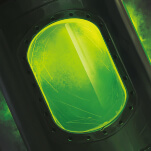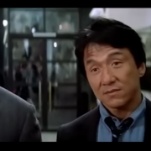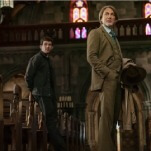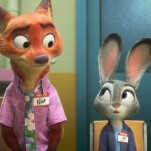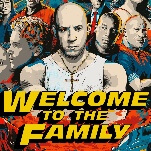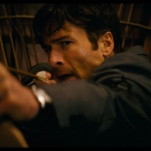A lot of it probably has to do with Ramsay’s use of sound—not the Jonny Greenwood score (which is typically excellent), but the soundscape of crowd, car, and subway noises. That, and the question of where fantasy ends and the film’s heightened reality
begins. (Obviously, Taxi
Driver is a major point of reference.) I have my own theories. But because
I don’t want to spoil a movie that’s only opening in limited release, I’ll just
say that, in my opinion, figuring out what is and isn’t real is the key to Joe’s
character and, by extension, the film.
What interests me, too, is You Were Never Really Here’s violence, which is both sadistic and oblique. Ramsay always depicts it in a desensitized way that sidesteps visceral impact (a lot of it happens off-screen), but is still disturbing, sometimes darkly comic. The most obvious (and at this point, most discussed) example is a rampage through a secret multi-story sex club that we see from the randomly cycling points-of-view of black-and-white security cameras. But there are many others. Ramsay’s direction is intentionally cracked, scenes put together from jagged pieces or in come cases just one long close-up. It makes me think about staging in general, which has been on my mind since I re-watched Steven Spielberg’s War Of The Worlds (long overdue). Spielberg’s sense of classic spectacle is second to none. Like the other great movies of his 2000s “dark period,” War Of The World subverts it. The imagery are macabre and surrealistic: The bodies floating down the river, the empty crashed jetliner, the crowd of onlookers vaporized into puffs of ash by the alien war machine.
Another new film comes to mind: John Krasinki’s A Quiet Place, a well-made scare machine with almost no spoken dialogue, set some time after the Earth has been invaded by blind, toothy, chitinous monsters with extra-sensitive hearing. There’s an effective metaphor for grief in the movie’s depiction of a family of survivors (Krasinki and Emily Blunt play the parents) living in near silence, though it’s ditched in favor of pure suspense mechanics in the second half—monsters creeping up to the characters and so on. Actually, A Quiet Place and You Were Never Really Here make a complementary
pair: one a derivative genre movie that adheres so strictly to a gimmick that
it sometimes verges on becoming a minimalist art film (especially in the long, quiet sections of the first act), the other a minimalist art film
doing everything it can to shred its derivative genre plot into strange pieces.
Which brings up a running debate about horror: the issue of the seen and the unseen. The classic case study on this issue is Jacques Tourneur’s 1957 movie Night Of The Demon. Tourneur, the father of ambiguous screen horror, never intended for the creature of the title to be shown, but was overridden by the producer. I interviewed John Carpenter a few years ago, and he said something that’s stuck with me ever since, “People say things like, ‘The rule is that you never show the devil.’ […] But if you have a good-looking devil, and it looks convincing—well, yes, you show it!” In other words, there’s no reason to hide the demon if it’s a demon the audience is supposed to be scared of. A fair point, though I don’t really think that Tourneur set out to stoke the audience’s fear of flappy, cross-eyed fiends; his real subject is our anxiety about and susceptibility to the irrational and the unknown.
The monsters in A Quiet Place are unambiguous and okay-looking (better than the aliens in Signs, to which it owes a sizeable debt), but they get plenty of screen time. The point is to put a fun twist on the trope: It’s us that they can’t see. As in You Were Never Really Here, a lot of the work falls on the soundtrack—and on staging and timing. Though You Were Never Really Here’s is deliberately off, never fully showing or skipping the grisly violence. To some extent, it’s screwing with audience expectations about the seen and the unseen just as A Quiet Place is playing straight to them. But only Ramsay’s film raises any questions about its monsters.

